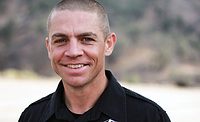Active Shooter: What’s Your Plan of Action?




On June 28, Wendi Winters lost her life when a man shot her and some of her colleagues in the Capital Gazette newspaper office.
Yet, Winters is being hailed as a hero, according to some who witnessed and survived the shooting, because Winters reportedly fought the gunman, and “charged forward holding a trash can and recycling bin,” reported the Capital Gazette.
And weeks before the shooting, said the report, Winters had taken active shooter training at her church.
While FBI statistics show that mass shootings remain rare, training for one is critical. An FBI report released in May said that more than 200 people were killed in active shooter incidents in the United States in 2016-17. There were 50 shootings, and 722 people were wounded. The shootings occurred at schools, nightclubs, concerts and even churches.
Increasingly, citizens are taking survival training outside of traditional areas, such as workplaces, in order to increase their ability to survive an active shooter event, if it should happen.
“The main thing is to practice and train for it, that’s the only way to be prepared,” says Sgt. Kathy Kelsheimer of the Mascoutah, Ill., Police Department, (Ret.), who is an expert on active attacker response and survival training. “To borrow a quote from Mike Tyson, ‘Everyone has a plan, until they get punched in the face.’”
“In this day and age, there is no safe place in the world,’’ says Dr. Kathy Platoni, a clinical psychologist and retired U.S. Army colonel, who is also an expert on PTSD. She survived the shootings at Fort Hood, Texas, in 2009, where 14 people were killed by a U.S. Army Major. The Fort Hood massacre is the deadliest mass shooting on any American military base. “What place is safe in our world?” Platoni says. “A school? A corporation? A hospital? It doesn’t exist.”
Kelsheimer says heightened tension in an active shooting situation can dramatically impact a person’s fine motor skills. Even for experienced first responders, the difference between book and classroom training and a well-choreographed simulated incident can be revealing. “When you lose your fine motor skills, and you go to lock a door and you can’t, that’s surprising. The classroom is a lot different than a real situation.”
Kelsheimer relates the story of a course attendee whose body froze during a simulated training exercise. Designed by Silverback Safety & Training Solutions, the drill was developed to mirror the events of the shooting at the Pulse nightclub in Orlando, Florida, in 2016. Fifty people died in that attack. The nightclub haze, loud music and an area jammed with people were all reminiscent of the atmosphere at the time of the attack.
“This course attendee might have gotten an A in the written test,’’ Kelsheimer says. “But in the moment of truth, he froze. Because of the training, he will know that if he has to go into a situation like that, his body could shut down. He will know that if an event does occur, he will be expected to handle the noise and the pressure. After a few repetitions, he rose to the occasion and performed well. He came away from the training with a newfound confidence that he is now capable of performing life-saving tasks.”
Troy Lowe, a SWAT Medic Team Leader and Tactical EMS Coordinator, designed the training with his team at Silverback Safety & Training Solutions. He is also the inventor of The Barracuda Intruder Defense System that has become popular within many U.S. schools, businesses, public buildings and even prisons. The locking device is manufactured by The BILCO Company. He also has put together gunshot treatment kits that have been used in real-world events to save lives. These kits – The Protector II IFAK and Original BITT kit – have been member-tested and recommended by the National Tactical Officer Association as well as the Ohio Tactical Officer Association.
Mike Wisner, an Army veteran and instructor in tactical medicine, says training for active shooting situations is similar to CPR training in that it’s a “force multiplier.” “There are a lot of CPR classes so that multiple people know how to do it,’’ he says. “This is kind of the same concept. The more people we can teach, the better results we’ll get. We need to push this down the tracks.”
Jamie Wilson is the only district nurse for the entire school district in Licking County, Ohio. Other staff members in the district have been trained on how to help people who have been hurt in active shooting incidents. “My job is training people how to save lives that don’t have any medical background,’’ Wilson says. “After the training, people feel like they can actually save a life. It gives them the skills to utilize those skills if there is an emergency.”
Hopefully, business, schools and other organizations will never need to use the training. But if a crisis situation does evolve, having more people who have the skills and knowledge to respond appropriately can save lives.
“When the stress inoculation occurs, it allows a responder to take all the new skills and put them together in life-saving situations,” says Kent Grant, a retired detective. “Through repetition and constant encouragement, a responder gets to where it all starts to come together for them. They are able to remember training, be calm, and apply the medicine to save lives.”
Looking for a reprint of this article?
From high-res PDFs to custom plaques, order your copy today!












